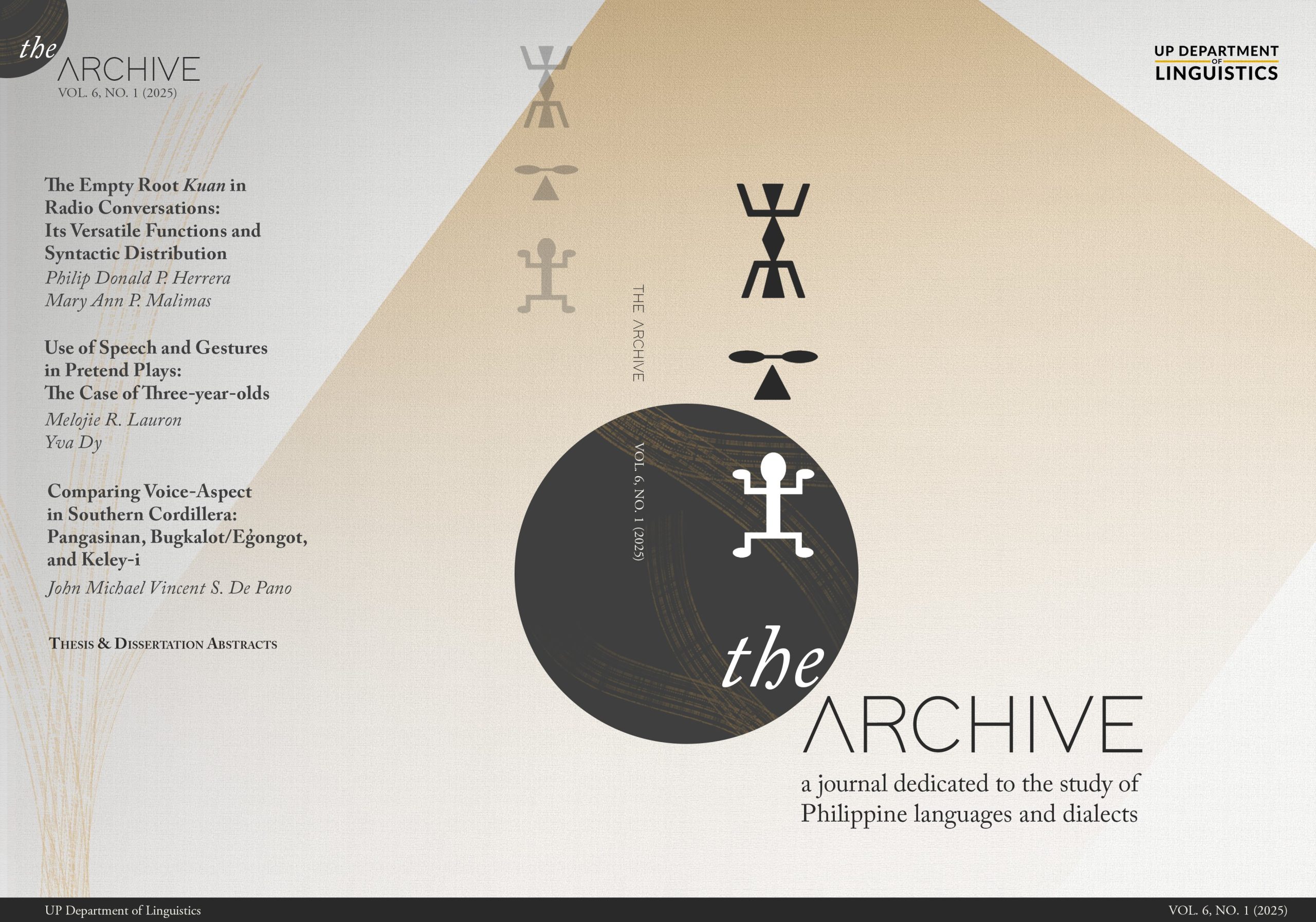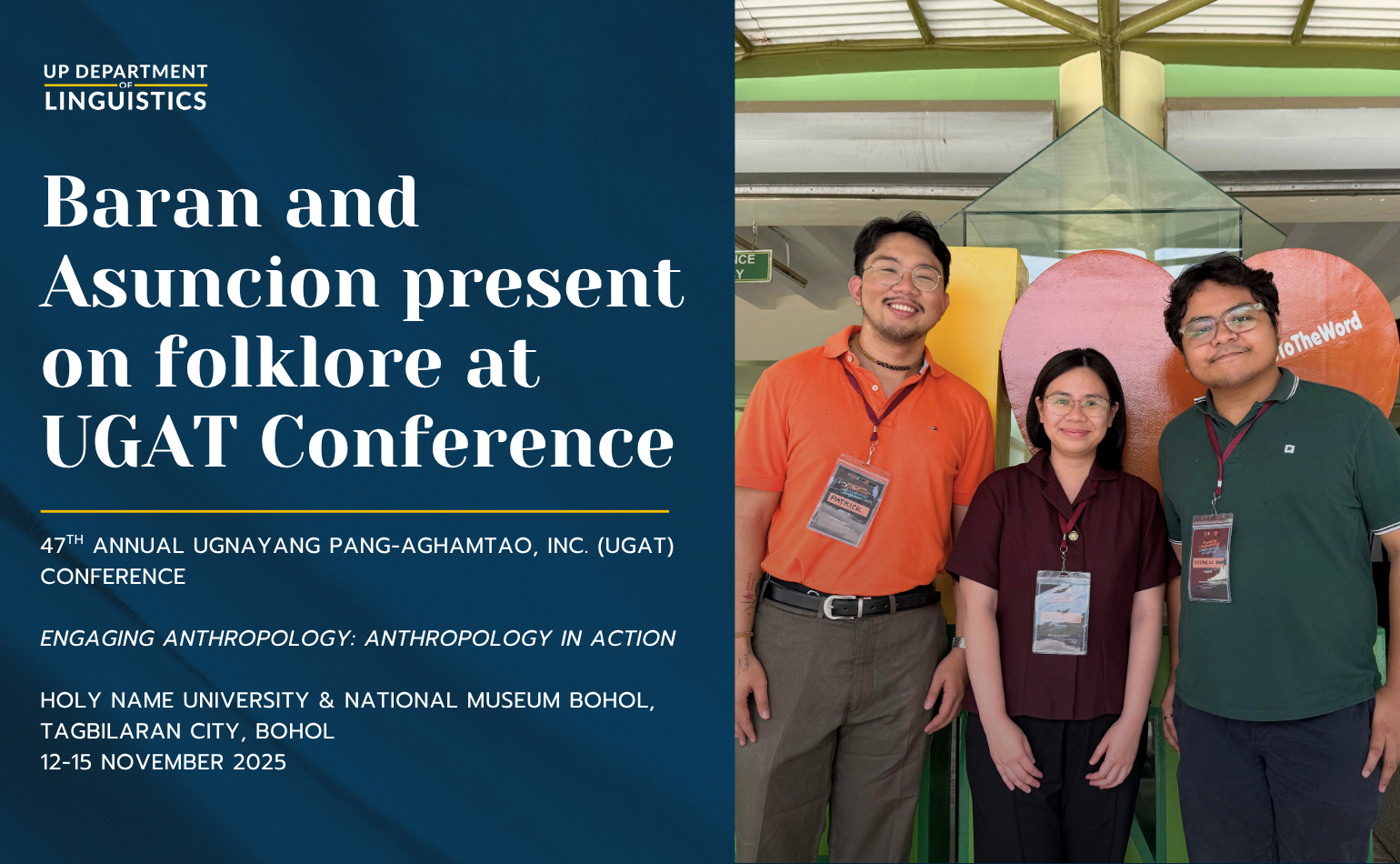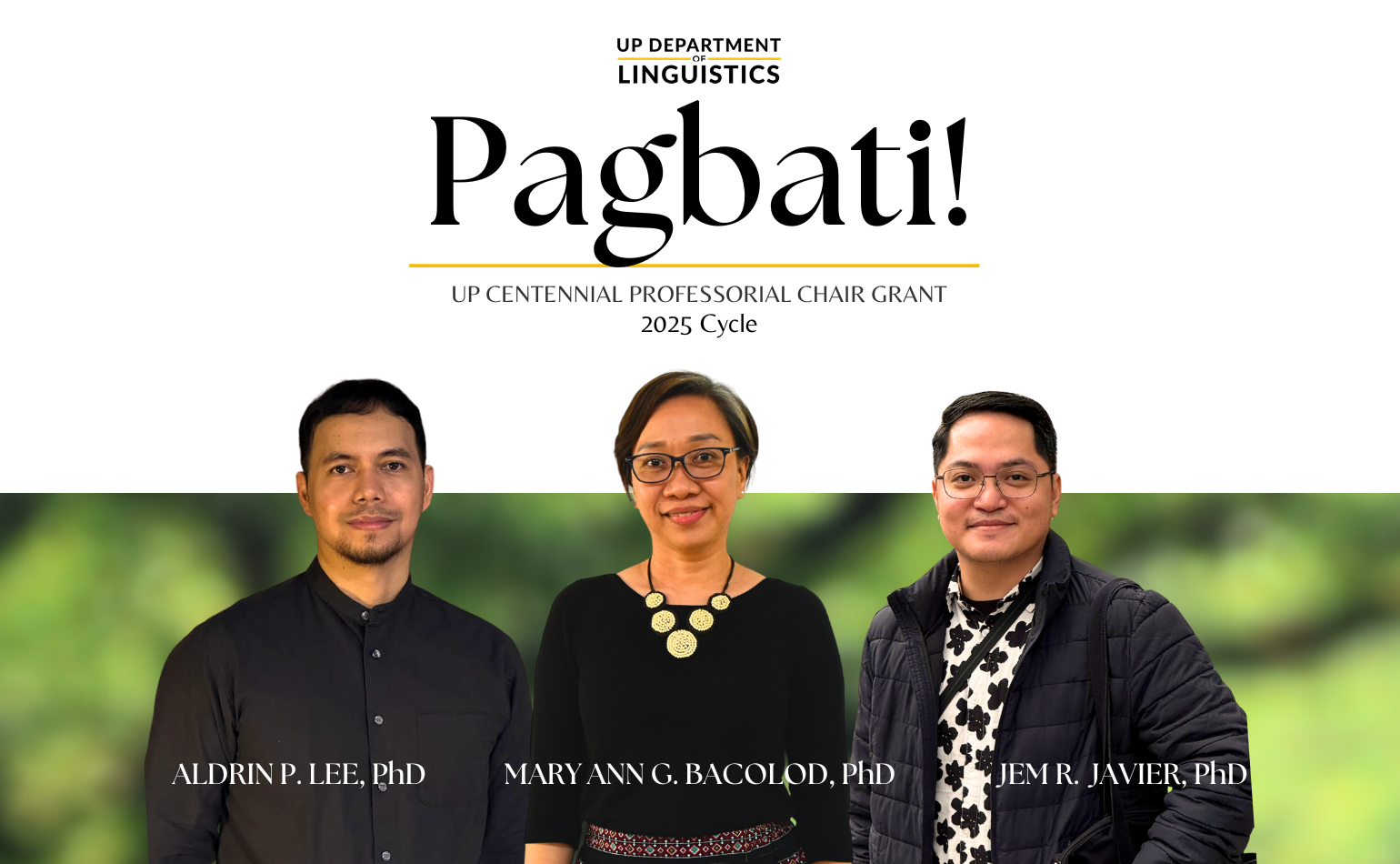
MA Linguistics student Earvin Pelagio and BA Linguistics alumna Kriziel dela Rosa discussed the status of the Mabatang-Kapampangan dialect for November’s installment of the 2023 Philippine Indigenous Languages Lecture Series (PILLS) through a webinar livestreamed in the Department’s official Facebook page last November 10.
The situation of Brgy. Mabatang, where the Mabatang-Kapampangan dialect is spoken, is unique since it is situated within a town in Bataan where the majority speak Tagalog; it does not have a neighboring Kapampangan speech community.
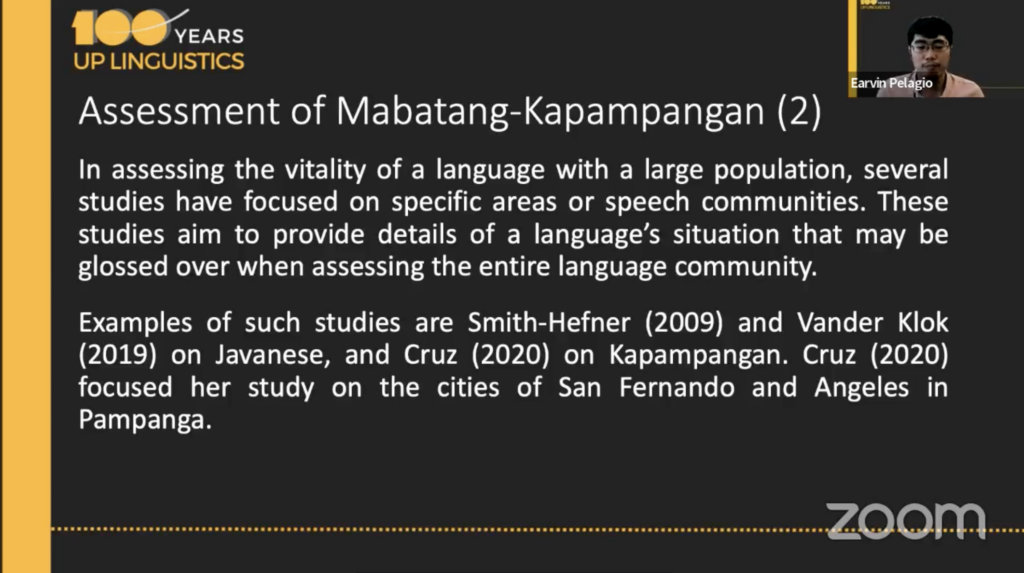
In this study, Pelagio and dela Rosa focused on the speech community of the variety, where they analyzed its vitality status by assessing the environment in Abucay and Bataan. Through this, they were able to observe details that may have been glossed over if they were to look at the situation of Kapampangan as a whole.
Pelagio and dela Rosa utilized the Expanded Graded Intergenerational Disruption Scale (EGIDS) and the Sustainable Use Model (SUM) Assessment Grid developed by Simons and Lewis (2012) in order to assess the vitality of Mabatang-Kapampangan. The SUM Assessment Grid measures the situation of the FAMED Conditions of a language: Function, Acquisition, Motivation, Environment, and Differentiation.
The presenters found that a score of 1 (Uncommon) is most appropriate to describe Mabatang-Kapampangan’s Functions, as its use is limited despite being used at home and throughout the community. It is rarely used at work, and it is not used as a mode of instruction in school. The same score is given for its Acquisition, since some children still learn Mabatang-Kapampangan at home and in their community but the majority do not. Pelagio mentioned that in a survey they conducted in 2021, results showed that only about 44% of the students at the local elementary school still use Mabatang-Kapampangan.
As for Motivations, a score of 2 (Common) was given since the members of the speech community have a positive attitude towards the language. However, this is mainly sentimental or identificational, since they do not see any practical benefit in speaking Kapampangan. The same score is given in terms of the Environment, since the government does not have a policy that is hostile towards Mabatang-Kapampangan. They felt that it would not be appropriate to give Mabatang-Kapampangan’s Environment a score of 3 (Sustainable) because while the Local Government Unit (LGU) actually has a program for the linguistic diversity of Bataan, they are primarily focused on Aita languages.
With regards to the condition of Differentiation, Mabatang-Kapampangan received a score of 1 (Uncommon). While there are instances in which L1 or L2 is clearly preferred, both are used without a clear preference in most functions, leading to an overlap between Mabatang-Kapampangan and Tagalog.
The overall score of Mabatang-Kapampangan’s Orality is seven (7), which is lower than the score necessary for a language’s orality to be classified as sustainable. Thus, the literacy portion of the assessment was disregarded.
From the SUM Grid, it was deduced that Mabatang-Kapampangan has an EGIDS level of 6b (Threatened), which indicates it is susceptible to language shift since parents opt to use Tagalog when teaching/talking to their children instead. In addition to this, the Philippine education system is primarily focused on Tagalog and English. Even with the implementation of the Mother Tongue-Based Multilingual Education (MTB-MLE), since Brgy. Mabatang is surrounded by Tagalog communities, Tagalog is used instead. Although the government and the wider society does not show any hostility towards Mabatang-Kapampangan, it does not provide the necessary support that it needs either.
After establishing the status the variety, Pelagio suggested methods to achieve the next sustainable level for Mabatang-Kapampangan: Sustainable Orality or EGIDS 6a (Vigorous). This can be done through the restoration of transmission of the language to the younger generation at home and at school, regular usage in everyday communication regardless of the age group, and efforts from the government and local community to implement programs that encourage the use of Mabatang-Kapampangan among its residents. Signages, announcements, and forms can also be used to make the language more visible.
He acknowledged that Bataan is a Tagalog-majority province, and that there are residents of Brgy. Mabatang who are non-Kapampangan migrants. However, he claimed that it would be ideal for their language to be more visible in their barangay since a big portion of the community is Kapampangan.
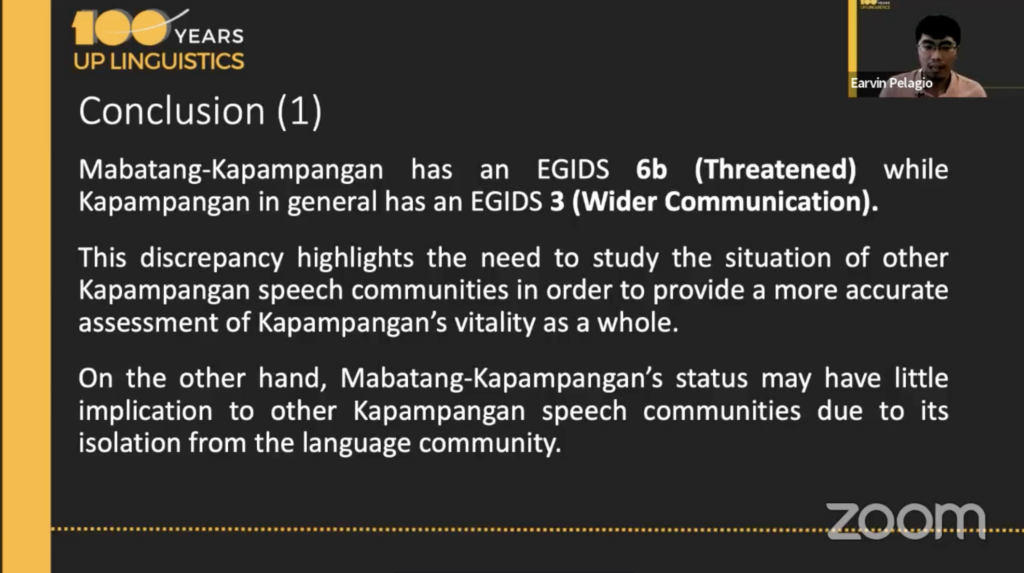
The lecture was concluded with an emphasis on the disparity between the Mabatang-Kapampangan’s EGIDS level 6b (Threatened), in contrast to the EGIDS level 3 (Wider Communication) of Kapampangan in general, which shows that there is a need to study the situation of Kapampangan speech communities in-depth for a more accurate assessment and understanding of Kapampangan’s vitality. However, Pelagio stated that it is possible for the status of Mabatang-Kapampangan to have little implication to other Kapampangan communities, considering how its geographical location isolates it from other Kapampangan communities.
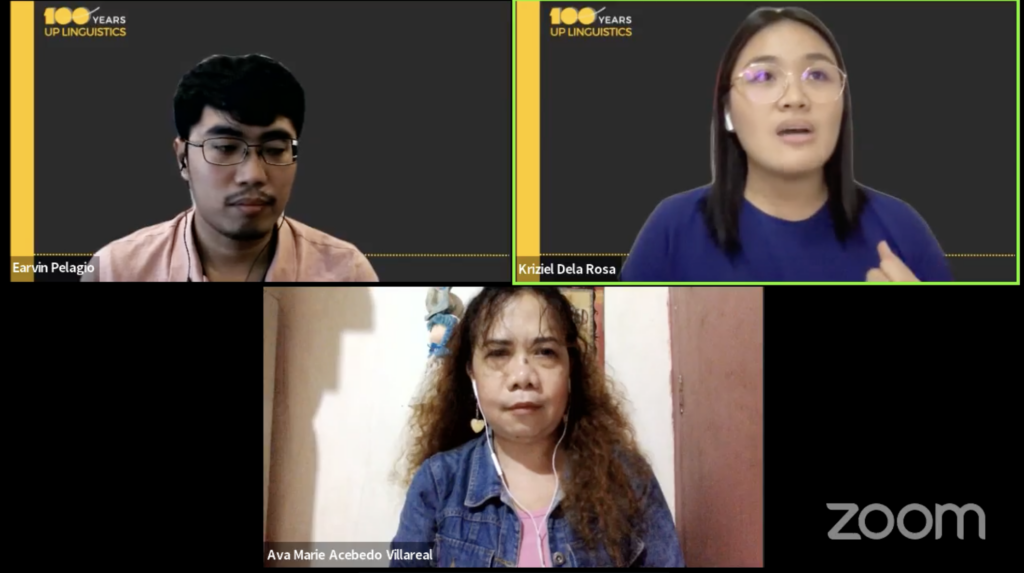
An open forum then followed the lecture, bringing forth discussions regarding the use of Mabatang-Kapampangan in the local school, the role of conscious effort from the local community itself in encouraging the use of Kapampangan in everyday conversations, the probability of the implementation of a Kapampangan protection policy within Bataan, and the language development efforts of Komisyon sa Wikang Filipino (KWF).
Stay tuned for the next installment of PILLS to be held next month, and look out for more lectures and events through the department’s social media pages.
Published by Patricia Anne Ocampo

